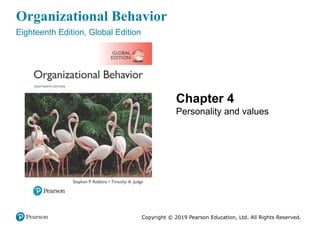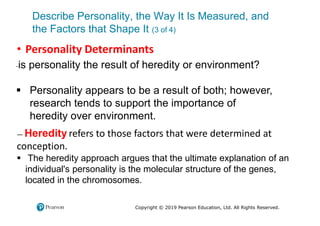The document discusses theories and models of personality including:
- Personality is shaped by both heredity and environment factors and can be measured through self-report surveys.
- The popular Myers-Briggs Type Indicator (MBTI) classifies people into 16 personality types based on preferences for extraversion/introversion, sensing/intuition, thinking/feeling, and judging/perceiving.
- The Big Five model describes five broad dimensions of personality: extraversion, agreeableness, conscientiousness, emotional stability, and openness. Different levels of these traits predict behaviors in work contexts.























